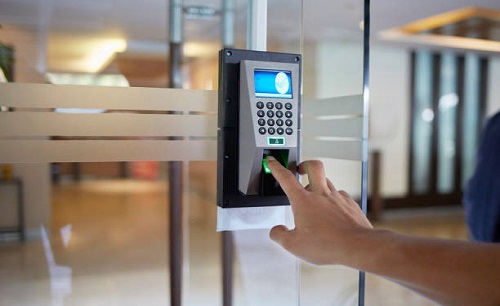
An access control system is a security solution that regulates and manages the entry and exit of individuals or vehicles into specific areas or buildings. It provides a means to control and restrict access to authorized personnel while enhancing security and protecting valuable assets. Here is some information about access control systems:
Types of Access Control Systems:
Physical Access Control Systems (PACS): These systems use physical barriers such as doors, gates, turnstiles, or barriers to control access. They often incorporate technologies like keycards, proximity cards, or biometric systems for authentication.
Logical Access Control Systems (LACS): LACS are used to control access to computer systems, networks, or data. They utilize usernames, passwords, tokens, or biometric credentials to authenticate and authorize users.
2. Components of an Access Control System:
- Credentials: These are unique identifiers that are assigned to individuals to grant access. They can be in the form of physical cards, key fobs, PINs, passwords, or biometric data.
- Access Control Panel: The control panel is the central hub of the access control system, responsible for managing and processing access requests. It verifies credentials and communicates with other system components.
- Card Readers/Biometric Scanners: These devices are used to capture and authenticate credentials, such as reading access cards or scanning fingerprints, iris patterns, or facial features.
- Locking Mechanisms: These devices control the physical barriers, such as electric locks or magnetic locks, to grant or deny access.
- Access Control Software: This software manages the system, stores user data, defines access rules, generates reports, and allows administrators to monitor and control access.
3. Key Features and Benefits:
- Enhanced Security: Access control systems provide a higher level of security by ensuring that only authorized individuals can enter specific areas. Unauthorized access attempts trigger alarms and can be recorded for investigation.
- Flexibility and Scalability: These systems can accommodate a wide range of access requirements and can be easily expanded or modified as organizational needs evolve.
- Audit Trails and Reporting: Access control systems maintain logs and generate reports that provide insights into access activities, helping

- with investigations, compliance requirements, and improving overall security.
- Integration Capabilities: Access control systems can integrate with other security systems such as video surveillance, intrusion detection, and time and attendance systems, creating a comprehensive security infrastructure.
- Efficient Management: Centralized control allows administrators to manage access permissions, revoke or grant access remotely, and easily track user activities.
